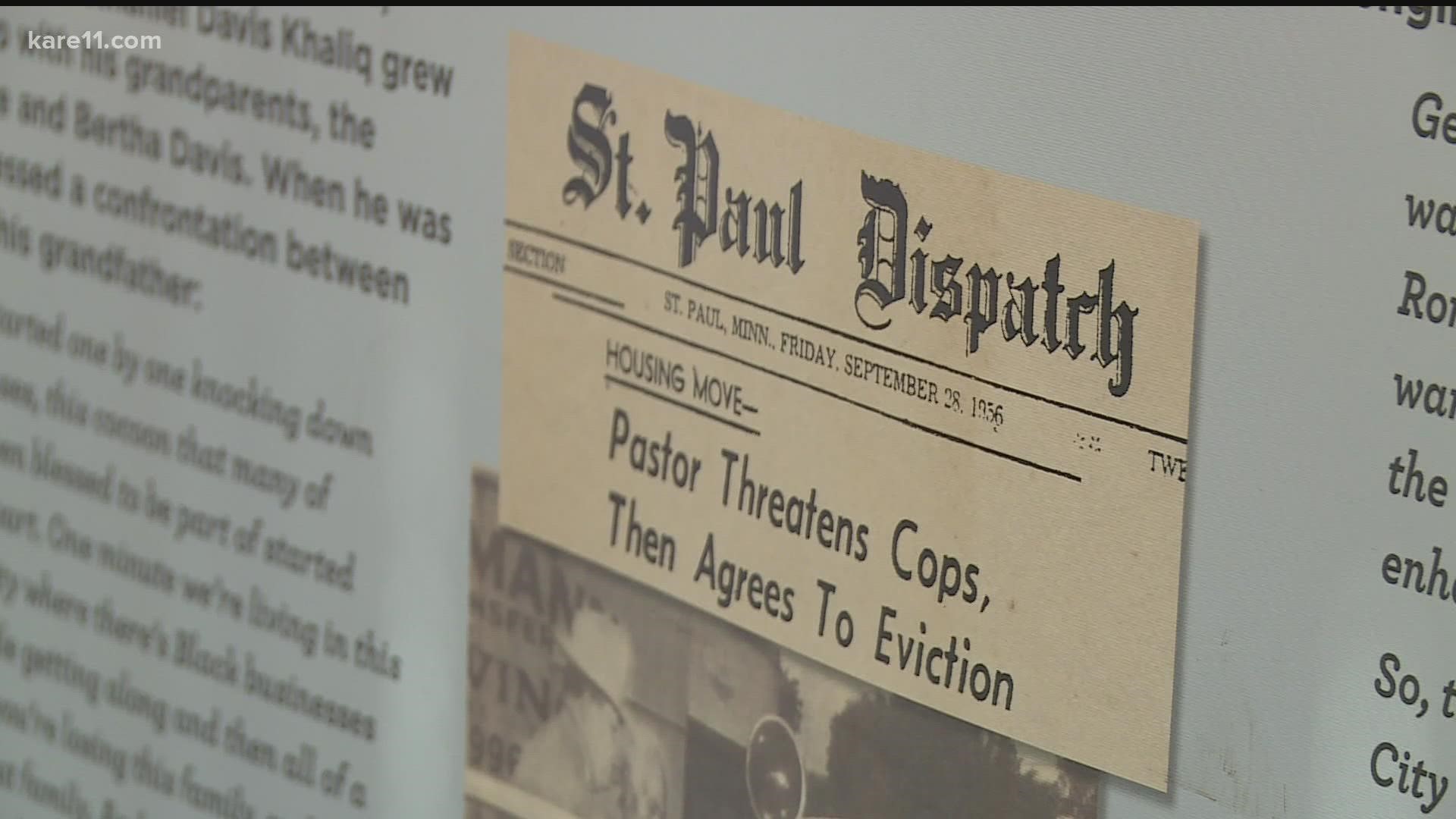ST PAUL, Minn. — Every time you drive Interstate-94 into St. Paul, you are driving through a community ripped apart decades ago -- a neighborhood that served as a safe haven for Black Minnesotans.
The construction of I-94 in the 1960s didn't have to go through Rondo, either. There were options to build the highway along old railroad tracks, according to the group, ReConnect Rondo.
This construction ended up displacing more than 600 households.
Sen. Tina Smith is spearheading the legislative push to make a new project happen, one that would rebuild a portion of Rondo on top of I-94, acting as a community land bridge.
"I want to be the best advocate that I can," Smith said, speaking to more than a dozen Black seniors who grew up in Rondo, before the highway's construction.
"It was a war," said Margarete Lovejoy, describing her youth and being displaced from the neighborhood.
The land bridge was not agreed to be a total fix, said the seniors at the senator's roundtable, but provide a bridge to both ends of the Rondo neighborhood.
The project would cost several hundred million dollars, and the upcoming U.S. transportation budget only earmarks one billion dollars for projects like the Rondo bridge.
Sen. Smith said listening to the stories of Rondo seniors gives her energy to go to Washington D.C. and argue for more money.
"How do people build wealth in this community... those homes were just taken from them," Senator Smith said.
St. Paul Mayor Melvin Carter said his family is from Rondo, and said even after the highway's construction, everyone knew everyone in that community.
"As a kid we'd get on 94 and my dad would be like 'We're in my bedroom now,'" Mayor Carter said, pointing to a street on a map during the senator's roundtable.
Mayor Carter also listened to stories of Old Rondo, voicing his support for the land bridge. He said the project has to benefit, and be led by the community who's been fighting to bridge Rondo back together.
"Just putting land there doesn't bridge the gap, but harnessing the wealth we're creating is bridging the gap," Mayor Carter said.
Other community members put their requests into Sen. Smith, including technology built into the land bridge for technology hubs, and for the bridge to create jobs for Rondo area young adults.
"We'll just have to work really hard at it," said Sen. Smith, who said she will advocate for the land bridge in D.C.
WATCH: Students investigate Rondo Neighborhood displacement:

